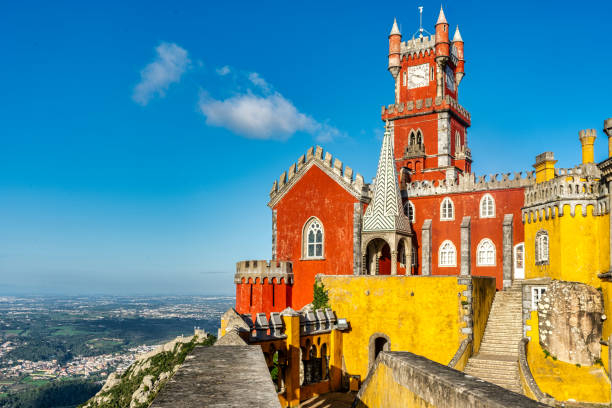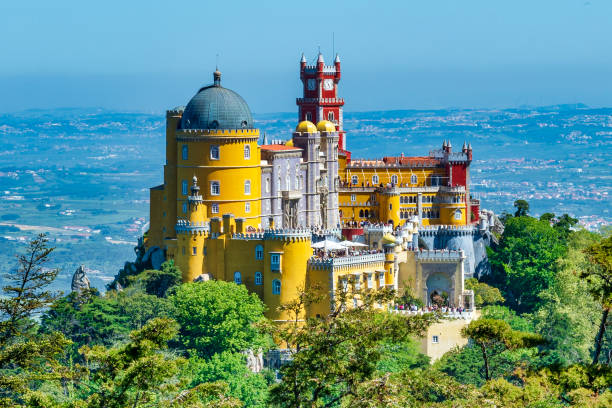Pena Palace
The Pena Palace is a Romanticist palace located in So Pedro de Penaferrim, Sintra, on the Portuguese Riviera. The castle is located on a hill in the Sintra Mountains above the town of Sintra and can be seen from Lisbon and much of its metropolitan area on a clear day. It is a national monument and one of the world's major manifestations of 19th-century Romanticism. The palace is a UNESCO World Heritage Site and one of Portugal's Seven Wonders. It is also used by the President of the Portuguese Republic and other government officials for state events.
After Ferdinand's death, the palace passed to his second wife, Elisa Hensler, Countess of Edla. The latter later sold the palace to King Lus, who wanted it back for the royal family, and the palace was regularly utilized by the family after that. It was bought by the Portuguese state in 1889, and following the Republican Revolution of 1910, it was designated as a national monument and converted into a museum. Queen Amélia, Portugal's last queen, spent her final night at the palace before fleeing the nation in exile.
The palace immediately drew visitors and became one of the most visited landmarks in Portugal. The hues of the red and yellow façades faded with time, and the palace was visually characterized as being wholly gray for many years. By the end of the twentieth century, the palace had been repainted and the original colors had been restored. UNESCO designated the palace and the rest of Sintra's Cultural Landscape as World Heritage Sites in 1995.
The Pena Palace is decorated in a variety of styles that reflect the exotic taste of Romanticism. The diverse blend of styles includes Neo-Gothic, Neo-Manueline, Neo-Islamic, and Neo-Renaissance. Much of this has been visible since significant restorations in the 1840s. There are also references to other notable Portuguese structures, such as the Belém Tower.
Location: Sintra, Portugal












